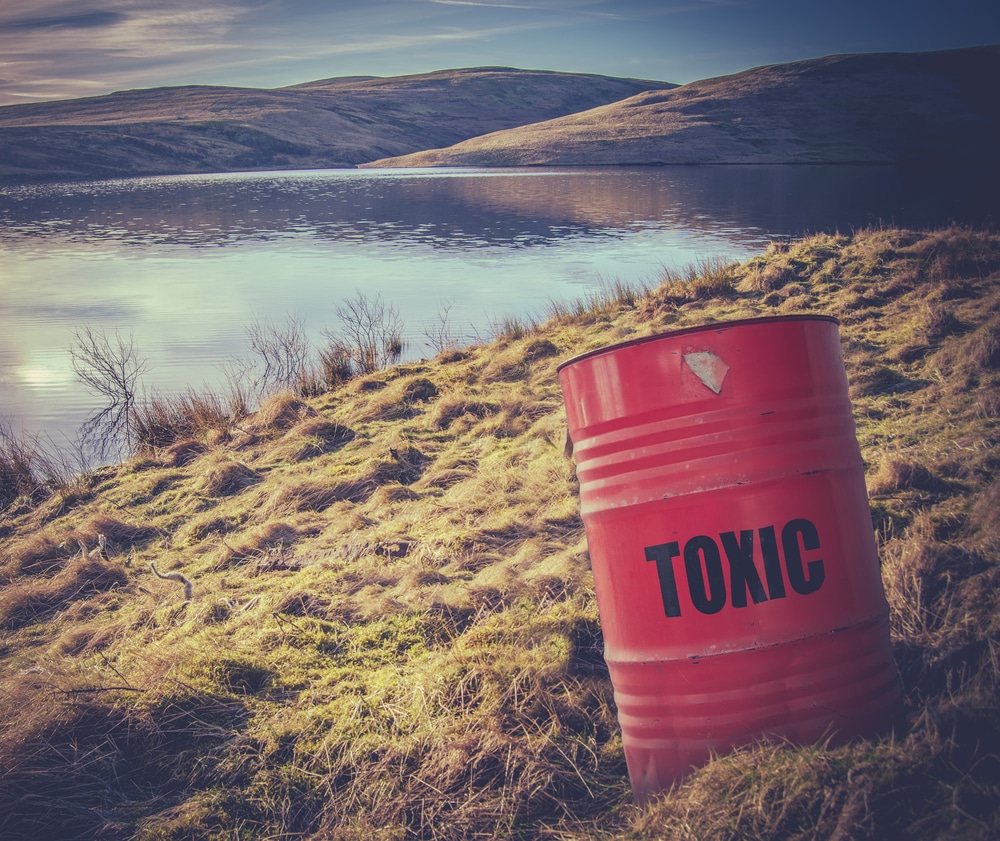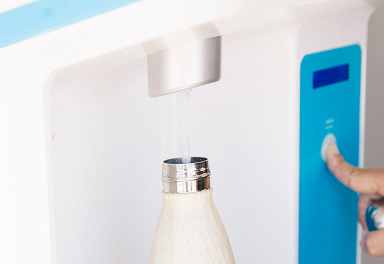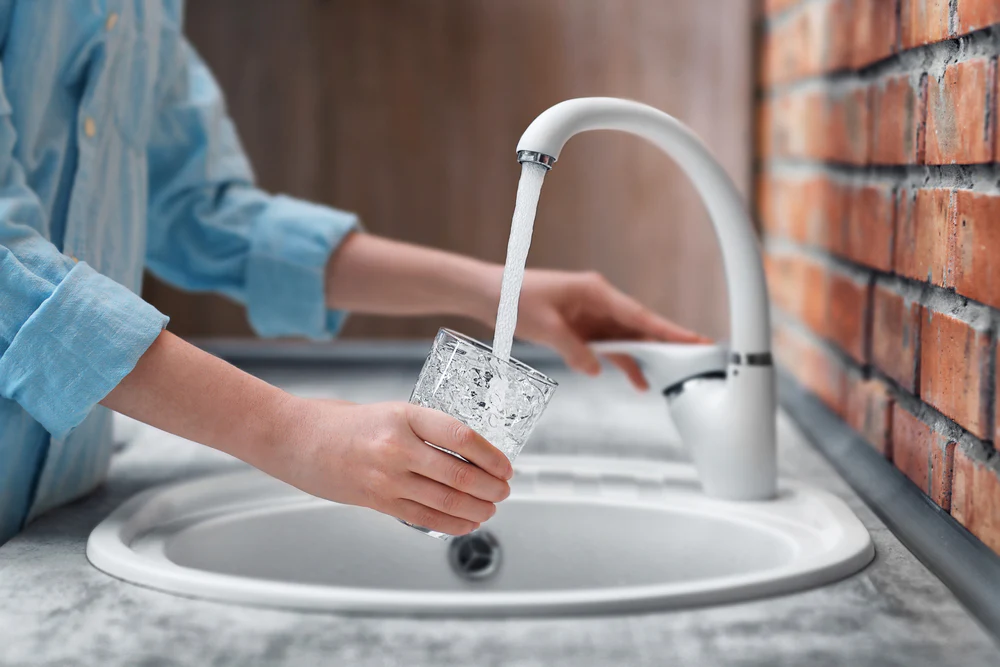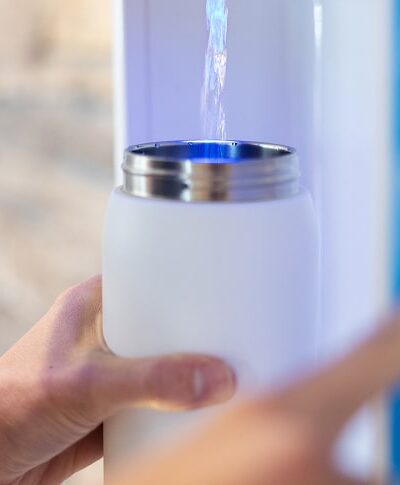The Environmental Working Group (EWG) has published a new report that reveals the presence of toxic chemicals in drinking water supplies in 31 states and 44 sites. Perfloroalky and polyfluoroalkyl substances, or PFAS, are a group of man-made chemicals dubbed “forever chemicals” since they never break down once they are part of the environment. PFAS have been around since the 1940s for their use in nonstick cookware, cleaning products, paints, and food packaging.
Exposure to PFAS have been linked to several health dangers, including but not limited to damage to the liver and kidneys, certain types of cancers, hypertension in pregnant women, birth defects, and other life-altering diseases. Since this chemical does not break down, it can accumulate in the body over time with constant contact. Even as water treatment facilities are trying to make changes to eliminate the level of exposure today, previous contamination is still accounted for in those who’ve already been in contact with PFAS.
The EPA issued a lifetime health advisory limit for PFAS in 2016 that equals 70 parts per trillion, a number that the Agency for Toxic Substances and Disease Registry believes should be seven to 10 times lower to prevent health risks. Regardless of the issuance, these numbers are often unenforced at the state and local levels.
Each municipality is responsible for its own testing and standards. With regards to resident safety when drinking from the tap, it’s assumed by most that their supply will have chemicals, with many at records levels. Major metropolitan cities, such as Miami, Philadelphia, and New Orleans have been tested for PFAS in the tap water, which only adds to their growing list of problems with providing residents drinkable water.
Miami’s Water Problems Continue with PFAS Detection
Water problems are nothing new for Miami. They’ve already been battling against climate change with regards to their access to clean water. Miami relies on the Biscayne Aquifer for its fresh water supply, but with climate change affecting the infrastructure, it’s easy for it to be contaminated. Another problematic area is the zone that lies beneath a Metrorail maintenance yard. The land was previously used to rinse containers that held toxic chemicals with residue disposed on site.
In 1981, after 15 years of disposal, it was determined these operations were contaminating the aquifer by leaching chemicals including lead, chromium, chloroform, and mercury. The solution at the time was to disinfect the water with ammonia and soften it with chlorine. However, the EPA warned in 2014 that flooding and storms in the area can push toxins from hazardous sites like these into the aquifer. In addition to climate change concerns and leaching chemicals, drainage from septic tanks containing bacteria and viruses have also plagued this area of the country’s water systems.
Their most recent water problem is with its PFAS detection. In 2019, Miami-Dade closed three wells near Miami International Airport and is monitoring three others that were above federal health standards for PFAS detection. There is a portion of the wells where foam has been used for training purposes and rescue operations, according to a statement by Miami-Dade’s Water and Sewer Department deputy director. After the foam is used and washed off, it goes into the storm drains and groundwater causing contamination.
According to information provided by EWG, test results from the FKAA J. Robert Dean Water Treatment Plant, which is approximately 40 miles from Miami and serves over 73,000 residents, detected five contaminants that exceed the EWG health guidelines. The plant’s legal limits for tap water contaminants have not been updated for nearly 20 years. A differentiation that EWG makes for all its findings is that legal limits don’t necessarily equal safe.
Philadelphia Residents Don’t Trust Their Public Water Source
Philadelphia ranked sixth on the EWG testing list for top cities that contained toxic chemicals in drinking water supplies. Much like Miami, Philadelphia residents aren’t reliant on the safety of their city’s water. In 2016, the city’s water department conducted a study, which found that 40 percent of residents refused to drink water from the tap, most opting for bottled water instead. The number slightly declined in 2018 to 39 percent.
In 2019, Pennsylvania governor Tom Wolf said the state would spend $3.8 million to treat water that had been tainted with PFAS, particularly in Bucks and Montgomery County, which is approximately 45 and 30 miles from Philadelphia, respectively. Although the limits of PFAS found equaled 46.3 parts per trillion, which is less than the EPA’s limit of 70 parts per trillion, it still ranks as one of the highest levels in water supplies tested.
The last noted water testing by the Philadelphia Water Department was in 2013 and 2014 as part of the EPA’s national sampling program, where PFAS were reported to be below the EPA’s health advisory level. However, due to the cumulative effects of exposure to PFAS, people who may have consumed contaminated water years ago may still run the risk of adverse health effects depending on how much they’ve been exposed to and over what period of time. That’s not to say that making changes to clean up water systems and provide consistent testing aren’t valuable, but it doesn’t reverse previous exposure.
New Orleans Privately Investigates Presence of PFAS
The Commander, Navy Installations Command (CNIC) published a fact sheet in July 2019 about the concern over the presence of PFOA and PFOS, two commonly used PFAS. The Navy activity that could have resulted in the release of these chemicals into the water system is the use of firefighting foam used for training, testing, and other life-saving emergency responses. It’s noted that PFAS may be present in the groundwater and/or soil at NAS JRB New Orleans that may expose residents nearby who are using private wells for their drinking water.
As a result, the Navy is performing a private drinking water well investigation with the Louisiana Department of Environmental Quality, the Agency for Toxic Substances and Disease Registry Region 6, and the Louisiana Department of Health. As a preemptive measure during testing, the Navy will provide bottled water or another alternative water source for residents in the sampling area whose water has PFOA above the EPA’s lifetime health advisory levels.
To add to the possible contamination of New Orleans tap water, the city has also faced recent problems with broken water pipes. In March 2019, it was reported that over half of the water from the New Orleans Sewerage & Water Board’s (S&WB) treatment plants may be seeping into the ground before reaching customers. Although the city’s water system experienced massive leaks prior to Hurricane Katrina, the massive storm further damaged the already weak infrastructure.
A FEMA report found that water leaks accounted for over 55 percent of the water produced by the S&WB. Unfortunately, New Orleans joins many major cities that face similar water system problems on various levels.
Giving Cities Access to Purified Water with FloWater
The reports of PFAS and the health dangers they are linked to have caused concern on a nationwide scale. Many cities already have faced other chemical-related problems due to old systems leaching lead and other toxins into their drinking water. Many times when people aren’t satisfied with what comes from the faucet, they turn to the convenience of bottled water. However, plastic leaches its own harmful chemicals and takes decades to break down organically, leaving behind plastic waste that’s spilling into the oceans as the result of overflowing landfills.
It’s more resourceful and far safer to use filtration systems to help meet clean water needs. A FloWater Refill Station provides purified water on-demand without the need for plastic at all. It goes through seven filters, each designed to remove all traces of contaminants, bacteria, and toxins from the water, as well as add back essential minerals and electrolytes that may have been stripped out. The latter raises the pH level of the water to help neutralize the acidity in the body and electrolytes like magnesium and potassium support healthy body functions such as cell repair and bone strength.
The station’s dispensing area fits any size of water container for a fast fill up with auto-replenishment and self-sanitization of the tanks built in. It uses the existing water source to pass through the advanced purification process and remove all of the impurities and chemicals found in most tap water. The result is crisp, refreshing water that people can feel confident about drinking.
Based on the EWG report and other information available in cities throughout the U.S., Miami, Philadelphia, and New Orleans aren’t the only places where water concerns are on everyone’s minds. For something that’s essential to the survival of all living things, it’s important to have access to fresh water at all times. Testing and maintenance take time to improve upon, which means that even after contamination is uncovered, it takes a while before there are sustainable solutions that can take its place.
With FloWater, there’s availability of purified water at all times without the need for plastic waste or continual maintenance. Schools, hotels, gyms, and several other industries and individuals are taking note of how these hydration stations are making a difference for the people they serve as a sustainable solution for their clean water needs.
Sources:
- https://www.miamiherald.com/news/local/environment/article239524263.html;
- https://www.miamiherald.com/news/local/community/miami-dade/article239407478.html;
- https://www.bloomberg.com/news/features/2018-08-29/miami-s-other-water-problem;
- https://www.inquirer.com/science/a/delaware-river-philadelphia-drinking-water-waterfront-watershed-history-future-20190710.html;
- https://www.phillymag.com/citified/2016/02/21/philadelphia-lead-poisoning/;
- https://www.msn.com/en-us/news/us/gov-wolf-pledges-3-8m-for-pfas-tainted-water-in-philadelphia-suburbs/ar-AAGbE6d;
- https://www.nola.com/news/article_16496297-02ec-5c8e-9033-c040525ceb72.html;




